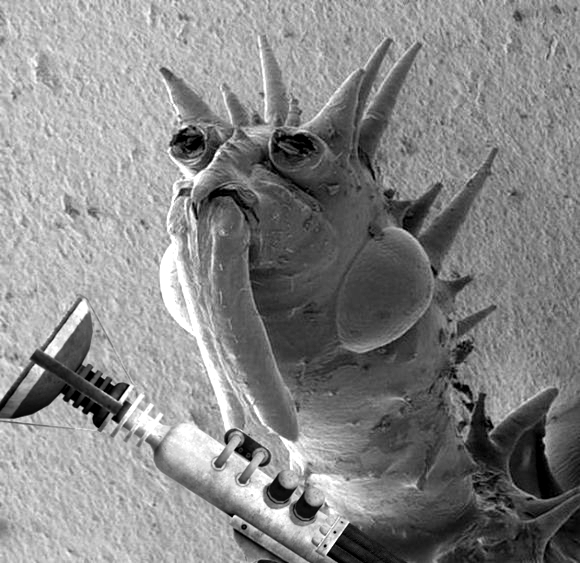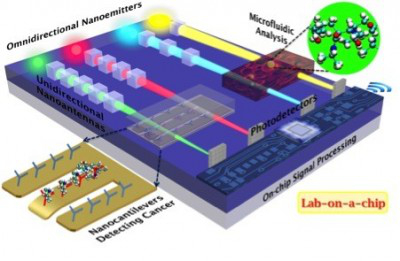Hip new laser looks pretty square
 Australian nano-engineers have devised the newest addition to the “lab-on-a-chip” idea.
Australian nano-engineers have devised the newest addition to the “lab-on-a-chip” idea.
Tiny optical antennas, which function like spotlights at the nanoscale, have been developed at Monash University, and the team behind them says they could have some exciting applications.
The new antennas are in a cube shape, which allows them to do a better job than previous spherical antennas at directing an ultra-narrow beam of light where it is needed, with little or no loss due to heating and scattering.
The researchers envision the antennas will be part of tomorrow’s “lab-on-a-chip” – a term for the multi-functional diagnostic devices of the future.
“The cubes are composed of insulating materials, rather than the conducting or semiconducting materials used for the spherical versions, and are easier to fabricate as well as more effective,” Monash engineering student Debabrata Sikdar said.
Mr Sikdar has worked on the design alongside supervisors Professor Wenlong Cheng and Professor Malin Premaratne.
The nanocubes can be arranged in a chain, where the space between them and their number can be adjusted to fine-tune the focused light beam.
As the separation between cubes increases, the angular width of the beam narrows and directionality improves.
“Unidirectional nanoantennas induce directionality to any omnidirectional light emitters like microlasers, nanolasers or spasers, and even quantum dots,” Mr Sikdar said.
Spasers are similar to lasers, but employ minute oscillations of electrons rather than photons of light.
Quantum dots, widely used in colour TVs, are tiny crystals that produce specific colours, based on their size.
 The new cubic nanoantennas have the potential to revolutionise the infant field of nano-electro-mechanical systems (NEMS).
The new cubic nanoantennas have the potential to revolutionise the infant field of nano-electro-mechanical systems (NEMS).
“These unidirectional nanoantennas are most suitable for integrated optics-based biosensors to detect proteins, DNA, antibodies, enzymes, etc, in truly portable lab-on-a-chip platforms of the future,” Mr Sikdar said.
“They can also potentially replace the lossy on-chip IC (integrated circuit) interconnects, via transmitting optical signals within and among ICs, to ensure ultrafast data processing while minimising device heating.”
The research team is now aiming at diverse practical applications of these tiny antennas.
The most recent report on the project is available here.








 Print
Print